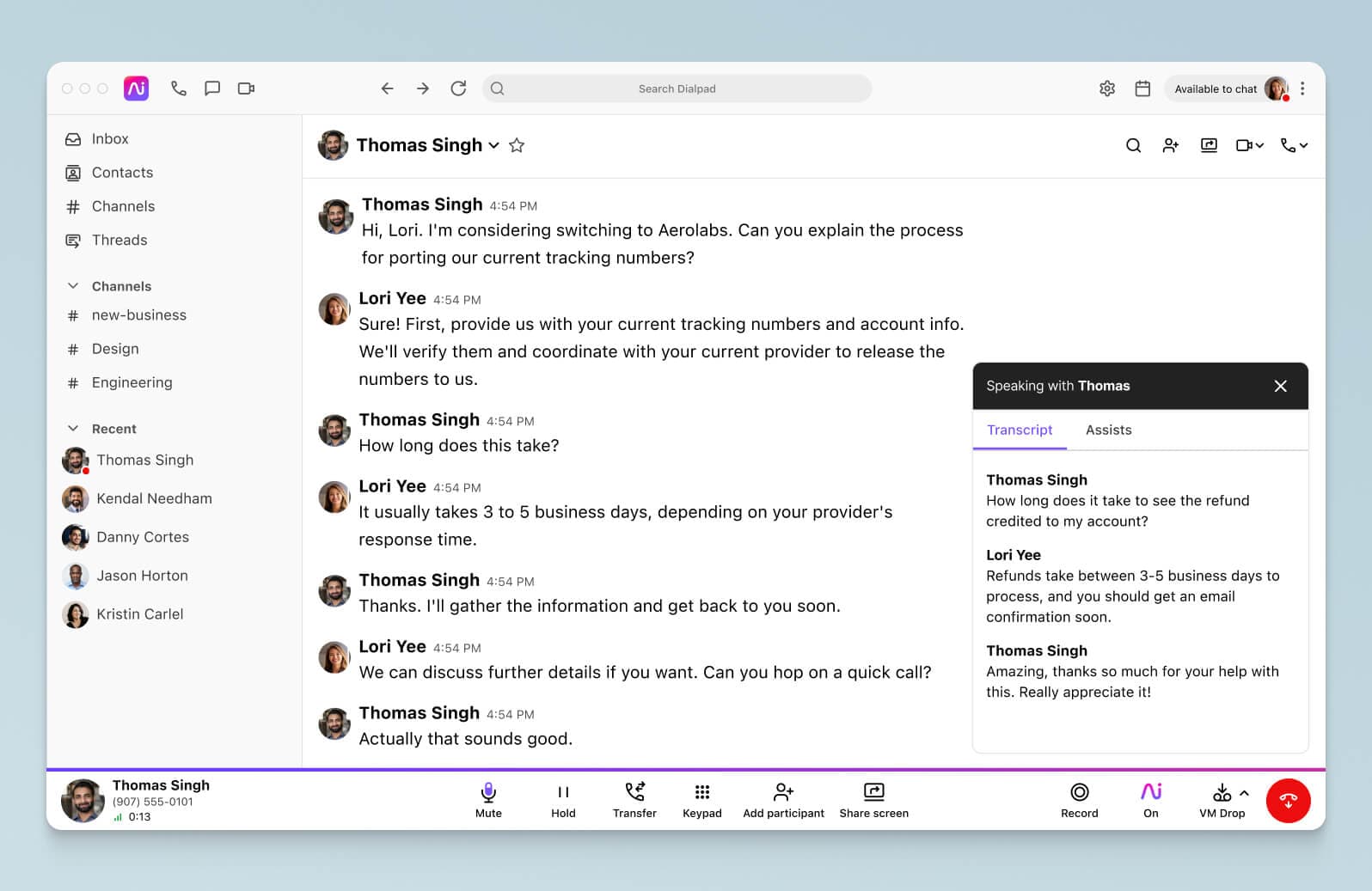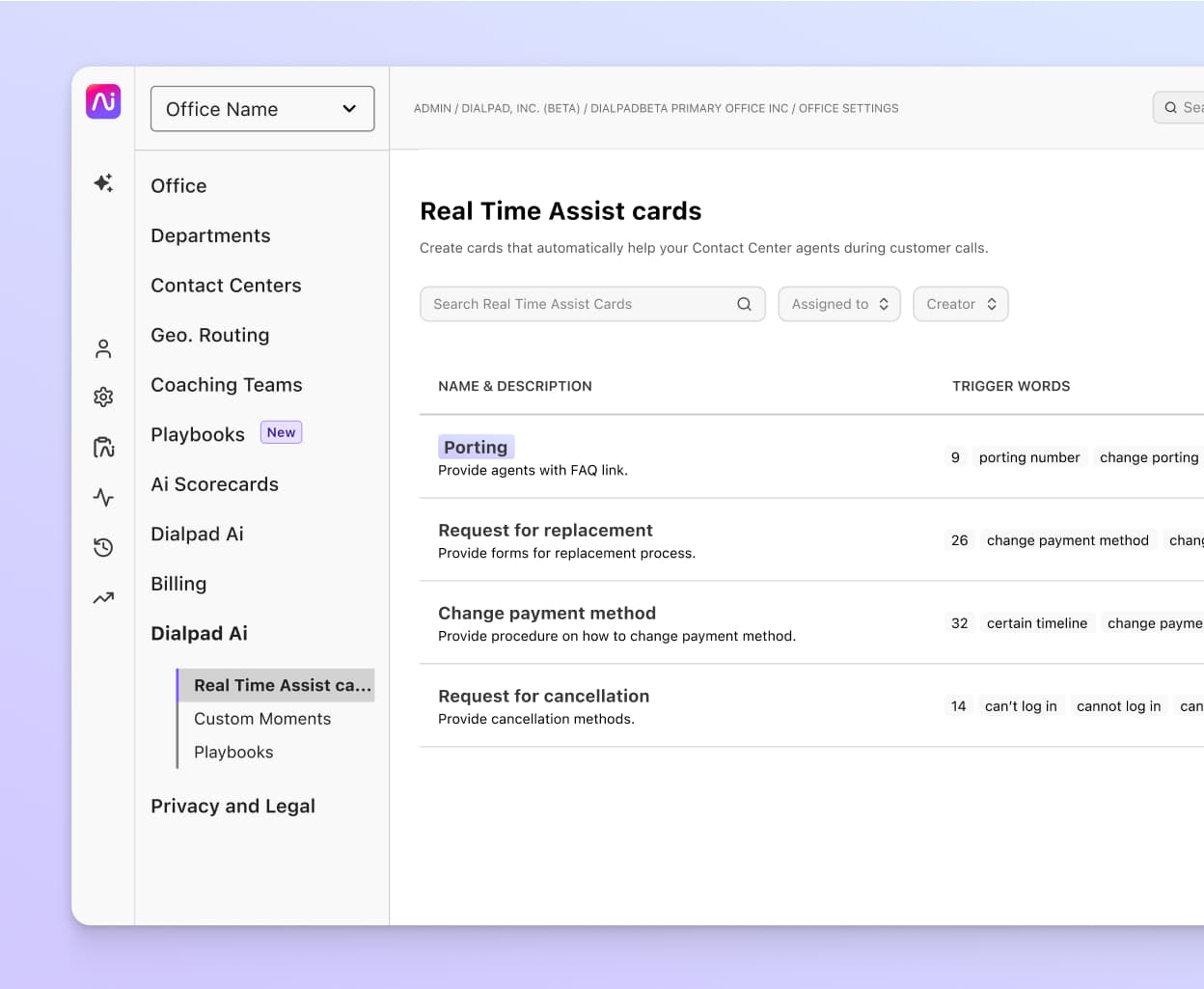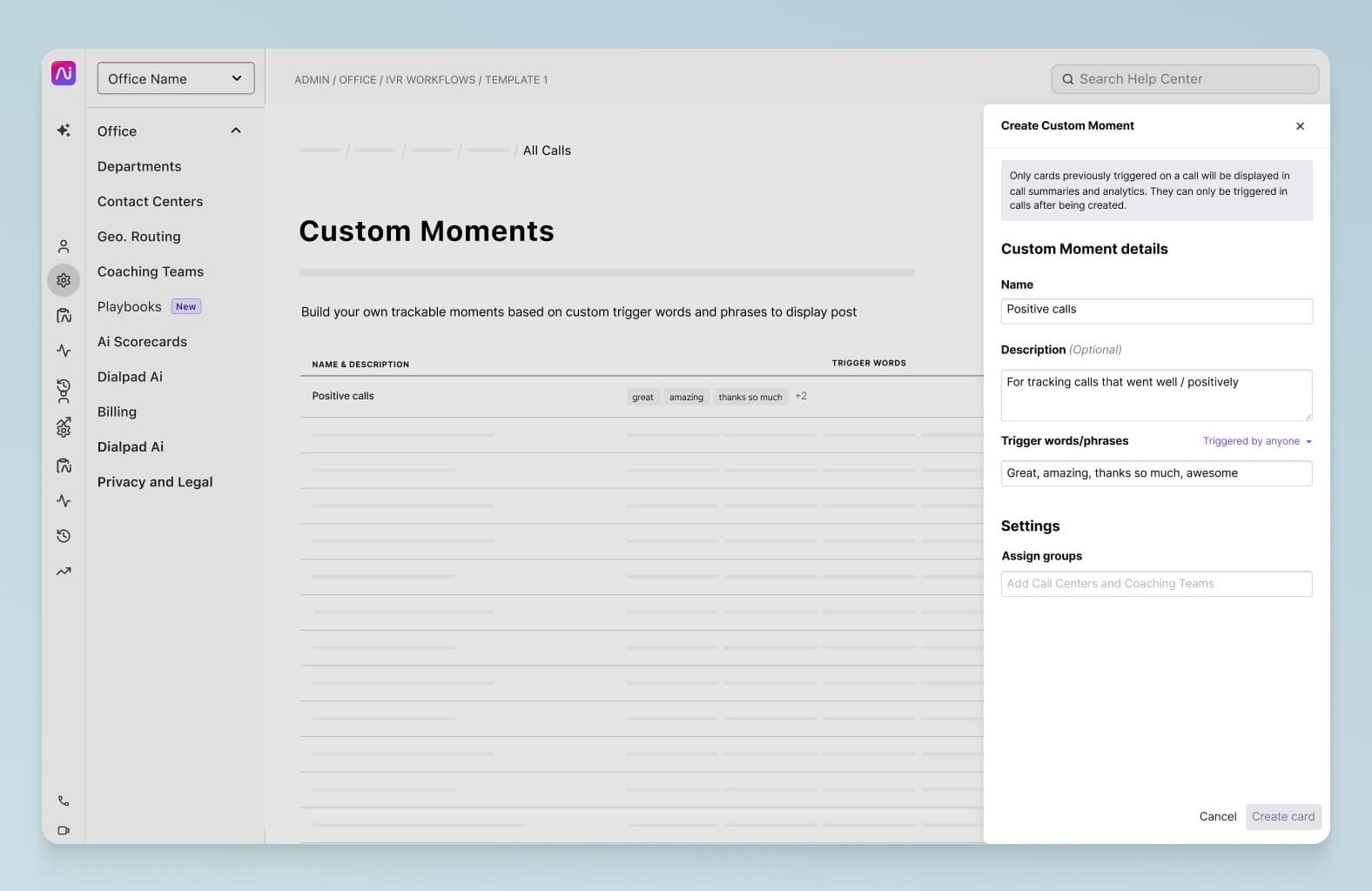Real-time speech analytics: What it is and how it works

Applied Scientist, AI Engineering

Tags
Share
You’ve probably noticed it, but contact center analytics tools have evolved dramatically over the years. From scheduling optimizations to better forecasting data, analytics have helped many businesses provide a better customer experience—at a much lower cost.
Now we also have real-time speech analytics, which uses key metrics to analyze customer interactions and conversations in real-time. This means that contact center and call center agents are provided with vital insights right when they need them, which makes life easier for customers and agents.
In this guide, I’ll delve deeper into real-time speech analytics and discuss why it’s become so important to make sense of customer conversations. And I’ll also show you how it works using Dialpad’s real-time speech analytics features as an example.
What is “real-time speech analytics?”
Real time speech analytics solutions allow companies and agents to analyze customer calls as they’re still ongoing, so they can gain actionable insights while the customer is still on the other end of the line.
These real-time insights allow businesses to see in detail how agents are handling phone calls, including how closely they follow standard processes and so on.
So, if an agent encounters a particular problem while they’re providing customer support, they may be provided with relevant information and guidance via an on-screen pop-up. This helps them to address the needs of the customer more efficiently, ensuring a better customer experience. This breed of analytics is now used in industries ranging from financial services to retail.
What we call speech analytics today has its origins in the speech recognition technology first developed in the 1950s. But modern speech analytics does much more than just recognize spoken phrases. It also analyzes sentiment and tone, as well as the speed of delivery and any gaps in the conversation. This provides a much more detailed understanding.
For example, Dialpad can transcribe conversations in real time, which is great, but this leads to other interesting abilities (like sentiment analysis!), which I'll get into later:

The difference between post-call and real-time analytics
We mentioned earlier that whereas businesses once had to rely on post-call speech analytics, they now have real-time speech analytics software as well.
The name pretty much gives it away—post-call analytics gives you insights into customer calls only after they’ve ended. This is all well and good, and of course post-call data has its uses, but it’s not likely to be of much use to agents who encounter problems while they’re in the middle of a conversation with a customer.
When real-time analytics come in handy
Real-time speech analytics, on the other hand, let you monitor conversations while they’re still ongoing, so that customer issues can be dealt with more efficiently in the moment. It’s also used to improve compliance (thereby reducing the risk of breaches and associated fines) and partially automating the quality assurance process.
Real-time call monitoring
Call monitoring, along with real-time speech analytics, can give call center supervisors a birds-eye view of how every call is going:

And because Dialpad Ai Contact Center has call center transcription, a manager can quickly read through transcripts of calls first without having to listen in to get a sense of how calls are going. There’s also a live sentiment analysis tracker that quickly shows whether a call’s sentiment is positive or negative. Features like these can help with real-time monitoring, even if one manager is overseeing a large team.
On-call coaching and assistance
Real-time analytics should help not only the supervisor, but the agent as well. Dialpad Ai can let an agent know if they're talking too fast—and if challenging questions come up? Not every agent is seasoned enough to handle all these questions on their own, but supervisors often can’t personally coach every single call.
This is where a good real-time speech analytics solution can help. For instance, Dialpad Ai not only transcribes calls in real time, it can also pick up on specific keywords and trigger pop-ups with tailored notes to help agents talk about different topics—live on the call:

What about post-call analytics?
Post-call analytics and call recordings are still useful, of course, for quality assurance and quality management. It’s always useful to be able to see key metrics for things like agent performance and common queries, whether you’re live on the call or not.
One useful post-call speech analytics feature in Dialpad, for example, is the analytics dashboard for Custom Moments, which are keywords and phrases that you can choose to be tracked over time:

Say you want to track how often “refund” and “money back” occurs on customer calls. You can set up a Custom Moment in Dialpad that’ll track how often your customers ask for refunds (and dig into those call recordings if you find that it’s becoming a problem).
4 benefits of real-time speech analytics
We’ve already touched on some of them, but let’s take a look at the major benefits of real-time speech analytics. These tools can be hugely beneficial for both businesses and customers in a number of different ways—from improving customer service standards to cutting costs.
It improves the customer experience
Being able to answer questions quickly and solve problems for customers in real time is one of the keys to providing a good customer experience and improving customer satisfaction. There’s no way around it.
It’s a basic requirement that customers expect. Real-time speech analytics gives your agents that power to provide answers quickly—and helps supervisors coach new hires and get them ready to tackle queries in less time.
It reduces churn
Customer churn is, understandably, a major consideration for many businesses. And a good customer experience is key to fostering those all-important long-term loyalties.
If you look online, you’ll see many fluffy and feel-good ways to improve customer engagement (like cute emails and running contests), but to be honest, keeping it simple is often what will keep customers coming back. Can you provide a good experience? Can you answer questions without making a customer wait? These are the basics (which real-time speech analytics can help with), and if you can do these well, you often won’t need other fancy tactics to boost retention and keep churn low.
It can help save on costs
Real-time speech analytics tools help businesses cut costs across a range of different areas. For instance, they can prevent businesses from having to pay fines for non-compliance, avoid unnecessary callbacks by improving resolution rates, and direct customer queries to lower cost channels like IVR or online self-service.
Also, some businesses may find that once they introduce real-time speech analytics, the automation of certain processes allows them to reduce headcount (and save money).
It helps mitigate and manage risk
With real-time speech analytics software, each call is scored according to compliance criteria in real-time.
This is important, as it can substantially reduce regulatory compliance costs (which can be substantial). Real time speech analytics tools are therefore commonly used to flag compliance breaches, and as part of quality assurance processes.
All of that enables your compliance team to focus on high-risk or low-quality calls, as well as helping you to improve training procedures.
Dialpad’s speech analytics features
Dialpad offers a wealth of both post-call and real-time voice analytics functionality that can benefit both your business and customers. Let’s take a closer look at how your business might benefit from Dialpad’s real-time speech analytics features.
Real-time transcription
Dialpad’s real-time voice transcription ensures that agents never miss key details on a customer call. Instead of having to scramble to type or jot down notes while a customer is talking, As I mentioned earlier, Dialpad will transcribe the call in real-time—which can be an invaluable resource for later reference and makes sure that everything from customer queries to contact details are stored.
Call summary
The call summary feature in Dialpad makes it easier for users to find and revisit important points from a particular discussion, whether that happens to be a regular customer call or an in-team meeting. This feature brings together call transcripts, audio snippets, action items, and other notes in one, easily understandable overview:

Live call sentiment
As I mentioned earlier, Dialpad Ai makes use of artificial intelligence to help teams glean new insights and take customer service to the next level.
Built using natural language processing (NLP), its advanced speech-to-text capability allows it to process conversations in real-time, distinguishing between participants to create accurate call transcripts which are easy to read.
In particular, Dialpad’s live sentiment analysis allows supervisors and managers to monitor the sentiment of any ongoing live call so that they can intervene and provide assistance where appropriate.
Easy integration
Better still, Dialpad enables you to bring your existing tools together—including CRMs such as Salesforce and Zendesk, as well as other tools like Microsoft 365—with hundreds of third-party integrations via Dialpad’s App Marketplace.
Conversation search
It’s easy to forget some details when you’ve been on a call—we’ve all done it. With Dialpad’s conversation search functionality, you can search your transcripts for specific keywords, so you can easily see was discussed. This way, important aspects of the conversation are kept in an easily accessible record for future reference.
Improve your contact center agent performance with Dialpad’s real-time speech analytics
Customer journeys are more complicated than ever, and having to manually track every conversation and touchpoint is no longer a valuable use of time for contact center teams. (Though perhaps you could make the argument that it never was.)
Dialpad’s wealth of real-time speech and conversation analytics features can help you optimize contact center coaching for your agents and ultimately, create an experience that will keep customers coming back.
If your business needs easily accessible customer insights from phone conversations, messaging, and more, then speech analytics technology is essential.
Looking for a real-time speech analytics tool?
Dialpad Ai Contact Center can help you improve agent performance, customer satisfaction, and your business’ bottom line. Get a firsthand look at how it works by booking a demo. Or, take a self-guided interactive tour of the app!








